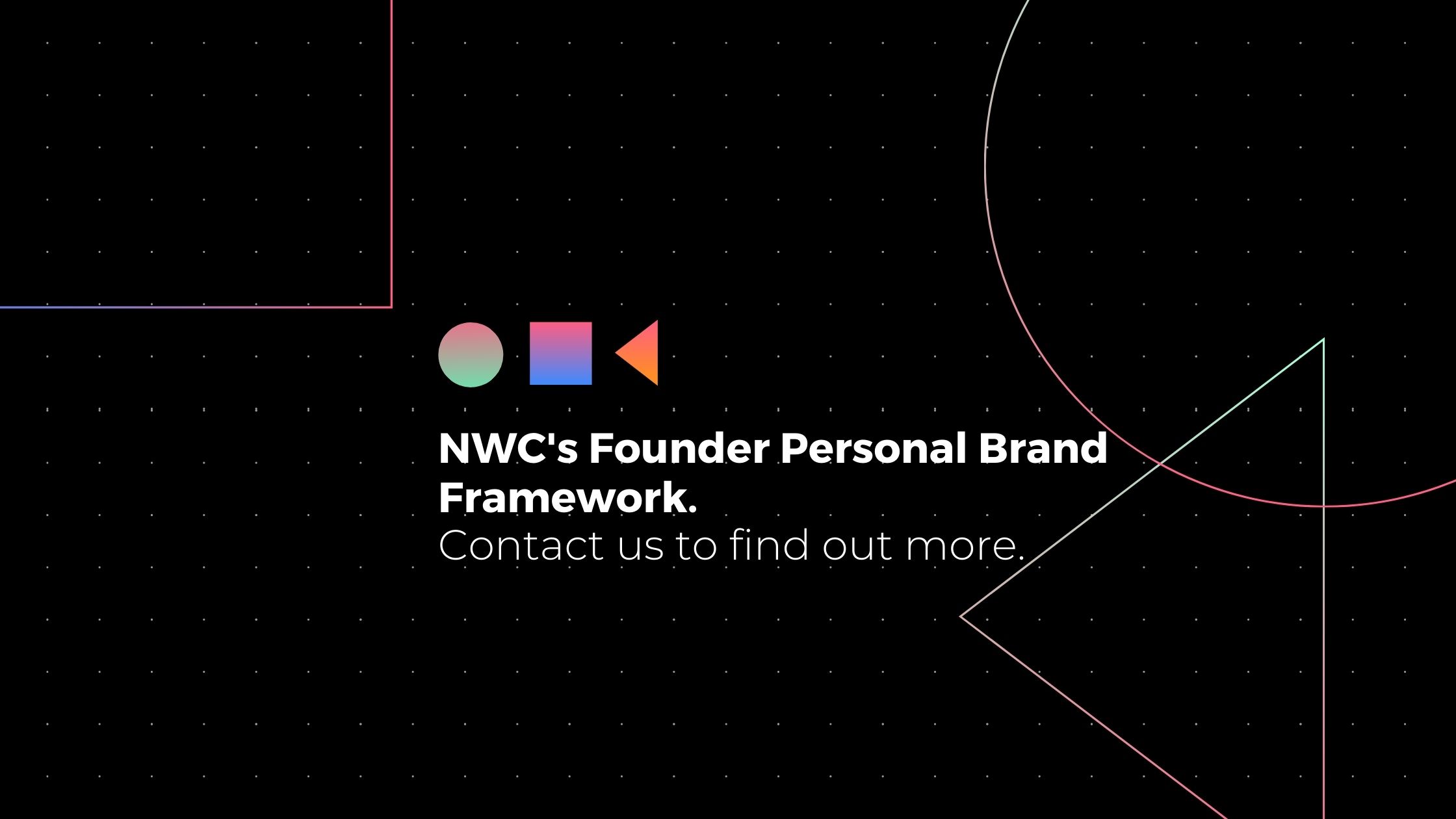The Entrepreneur’s Personal Brand: 5 things I’ve noticed start-up founders need to work on to inspire confidence from investors
Heading to a number of start-up pitch nights, demo days and networking events over the last few months, I’ve enjoyed hearing from some passionate founders about ground-breaking new products. Walking around display stalls, hearing pitches on stage and speaking one-on-one with entrepreneurs, I couldn’t help view it all through my ‘personal branding lens’… and this is where I made some interesting observations.
While passion and enthusiasm are always present, and a strong business model, brand and proven track record sometimes there… what’s often missing are well-planned and confident personal brands.
I recently wrote about 5 huge reasons you must work on your Founder Personal Brand if you want to attract early-stage investment (and market opportunities). In addition, here are some of the gaps I’ve seen as I walk around listening to entrepreneurs – gaps that are costing them opportunities.
#1 Stepping forward with a confident and engaging first impression
Many entrepreneurs and supporting team members I met at stalls or networking in a crowd were eager to step forward, say hi and introduce themselves… yet few of these followed with a question about who I might be, what brings me here etc…. instead, launching straight into a description of their innovation. This was a missed opportunity to build rapport by showing interest in me, and more to the point, to gauge how I might help by finding out where I fit in.
A few entrepreneurs even made it really hard work for me to engage, because they were not proactive or confident enough to step forward and be the first to say hi and shake hands. One was too busy eating; another was busy with another visitor but could have acknowledged me to increase the chances of me waiting around. Others stayed in the comfort zone of talking to a team member rather than breaking away to meet someone new. While this lack of total engagement was rare when I approached a stall, it was quite common in a networking environment where you were ‘bumping into people’ in a crowd.
The problem here is twofold:
- New founders focus on their pitch instead of on building relationships when networking. The pitch should be secondary in a networking situation, because it is relationships that grow businesses.
- First-time-founders lack confidence in networking because of a lack of experience and skills, and because of a gap in their understanding of what it takes to build great business relationships from first impressions.
#2 Mastering conversation skills towards achieving your goal
Following along the lines of the first impressions above, I found it extremely rare that a start up team member would make the most of a networking conversation, with a little forethought to what they wanted to get out of such conversations at the event. If you pre-plan what you would ideally like to get across and find out, and plan your questions accordingly, you can have some game-changing conversations in just a few minutes.
For example, one stall-holder I spoke with was telling me all about her business but not asking any questions of me. Something she said, however, sparked an idea and I wanted to be helpful, so I mentioned that I may know someone I can connect her to, who would be interested in her innovation. Do you think she made the most of this? No, because if she had, she wouldn’t have just handed over her card in the hope that I would remember to pass it on to my contact (while still knowing nothing about me except for my first name). Instead, she would have asked for my card, so she could follow up with me later, in case I got busy and forgot (and most people do).
Knowing how to plan for conversations that move you from Point A to Point B includes:
- Understanding how to structure, guide and tailor the conversation.
- Having a clear follow-up plan to continue the conversation later.
#3 Sales conversations that work
If you are having a chat with someone new in front of your business stall, I would argue that a formal pitch or a hard sell will not work. This is a relaxed setting where people are moderately curious and want to be supportive, but they don’t want to feel held hostage, forced to listen to a 10 minute monologue that isn’t hitting the mark.
These conversations need to be about connection – yes connection, not a pitch. If I feel that we are having an exchange, both of us asking questions in a conversation that, while focusing on your business, is adapted as it goes along to respond to my interests and understandings… then I’m much more likely to maintain interest, remember you as someone I enjoyed talking to, and perhaps become a customer, referral source, advocate or investor down the track.
The founder gap in sales conversations includes:
- Shifting the approach from ‘about me’ to ‘about you’.
- Learning great questions to ask to develop the conversation and build connection.
#4 Getting clear on one simple brand message
New start ups have to face a lot of scary and new situations. When nerves and passion take over, we are rarely succinct, clear and confident in our communication!
Getting clear on one simple brand message that underpins everything you do is what is going to help you make your brand clear and resonant with others. This includes focusing on the core value proposition, getting to the point, and answering the immediate and exact question you are being asked – not pre-ambling with a whole lot of meaningless fluff.
The work founders need to do to clarify brand is usually:
- A well-structured brand discovery process with the team to drill down to the business’ key messages, for a specific audience, in the language they would use.
- Practice at delivering these messages clearly and confidently in conversation with others and in pitching situations.
#5 Delivery style on stage
I have witnessed some impressive pitches and some terrible ones… but most formal presentations I have seen land somewhere in between – in other words, there are gaps.
Firstly, it’s important to remember that you are pitching yourself as founder/leader, not just pitching the business model or brand. Investors have to like you and think you will be able to work well with others. So it’s not just what you say, it’s how you say it. Humility combined with genuine confidence is the key here, and this means taking responsibility for uncertainties or problems, speaking with clarity and brevity, thinking about your appearance and body language, managing your tone of voice, and respecting your audience (what do you know about the audience and how can you acknowledge this?).
“It’s not just what you say, it’s how you say it. Humility combined with genuine confidence is the key”
What distractions are there (e.g. your wardrobe issues, the lighting, the layout, placement or manner of using the slides)? I’ve even heard a “No, I don’t want to stand on the stage” – this is not thinking about your audience. Reading off slides with tiny text is not thinking about your audience. Talking too fast, focusing on something other than what is being asked in Q&A, being defensive… none of these show you are interested in considering your audience. If you are not considering your audience, you are not thinking about the needs of your potential investors or your customers… and a business that doesn’t put this first, fails.
Some of the key gaps I’ve observed in preparing to pitch:
- Looking at the whole presentation experience from the perspective of the audience – not just the content but the visual and auditory aspects too. Did you know that only 7% of the meaning we make is from the verbal? The rest is made up of visual and auditory cues.
- Learning how to authoritatively answer questions during the Q&A, even when you don’t have a clear answer – e.g. practicing for smooth transitions between team members (what knowledge areas are you each handling?) and having an approach to curly questions that reveal problems or things you haven’t thought of.
- More, more, more practice at public speaking and making great first impressions.
I’ve heard it said, by experienced innovation advisors and investors, that founders who show potential start with showing they understand their gaps. This is because it means you are willing to learn from others and work on anything that needs work, to fast-track your success.
Do you know your Founder Personal Brand gaps?
Contact us for NWC’s Framework.
Related material
5 huge reasons to work on your Founder Personal Brand during early stage investment


